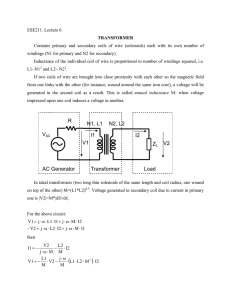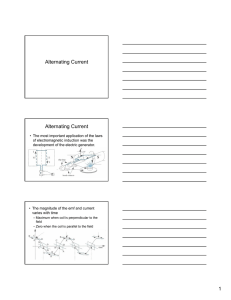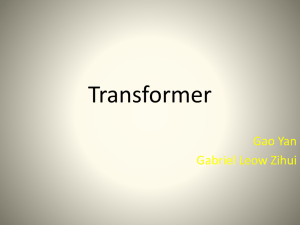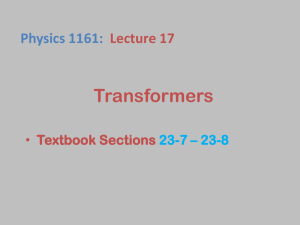23.3 Induction and the Electric Generator
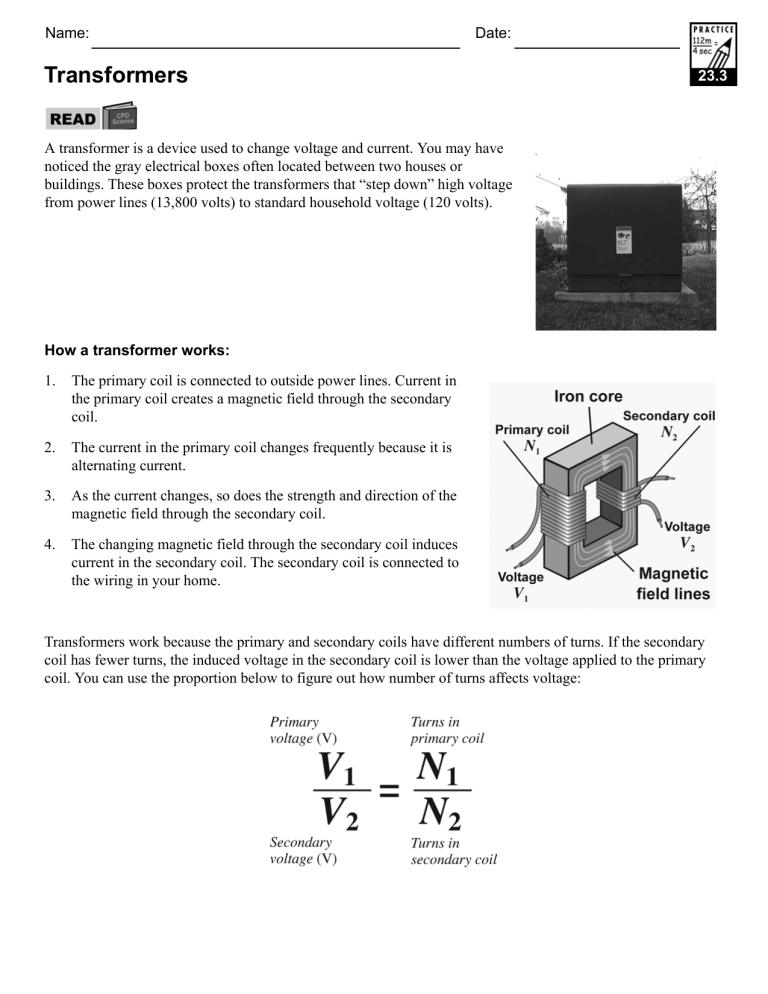
Name:
Transformers
Date:
A transformer is a device used to change voltage and current. You may have noticed the gray electrical boxes often located between two houses or buildings. These boxes protect the transformers that “step down” high voltage from power lines (13,800 volts) to standard household voltage (120 volts).
23.3
How a transformer works:
1.
The primary coil is connected to outside power lines. Current in the primary coil creates a magnetic field through the secondary coil.
2.
The current in the primary coil changes frequently because it is alternating current.
3.
As the current changes, so does the strength and direction of the magnetic field through the secondary coil.
4.
The changing magnetic field through the secondary coil induces current in the secondary coil. The secondary coil is connected to the wiring in your home.
Transformers work because the primary and secondary coils have different numbers of turns. If the secondary coil has fewer turns, the induced voltage in the secondary coil is lower than the voltage applied to the primary coil. You can use the proportion below to figure out how number of turns affects voltage:
Page 2 of 2
23.3
A transformer steps down the power line voltage (13,800 volts) to standard household voltage (120 volts). If the primary coil has 5,750 turns, how many turns must the secondary coil have?
Solution:
1
13,800 volts 5750 turns
120 volts
V N
=
2
N
2
1.
In England, standard household voltage is 240 volts. If you brought your own hair dryer on a trip there, you would need a transformer to step down the voltage before you plug in the appliance. If the transformer steps down voltage from 240 to 120 volts, and the primary coil has 50 turns, how many turns does the secondary coil have?
2.
You are planning a trip to Singapore. Your travel agent gives you the proper transformer to step down the voltage so you can use your electric appliances there. Curious, you open the case and find that the primary coil has 46 turns and the secondary has 24 turns. Assuming the output voltage is 120 volts, what is the standard household voltage in Singapore?
3.
A businessman from Zimbabwe buys a transformer so that he can use his own electric appliances on a trip to the United States. The input coil has 60 turns while the output coil has 110 turns. Assuming the input voltage is 120 volts, what is the output voltage necessary for his appliances to work properly? (This is the standard household output voltage in Zimbabwe.)
4.
A family from Finland, where standard household voltage is 220 volts, is planning a trip to Japan. The transformer they need to use their appliances in Japan has an input coil with 250 turns and an output coil with 550 turns. What is the standard household voltage in Japan?
5.
An engineer in India (standard household voltage = 220 volts) is designing a transformer for use on her upcoming trip to Canada (standard household voltage = 120 volts). If her input coil has 240 turns, how many turns should her output coil have?
6.
While in Canada, the engineer buys a new electric toothbrush. When she returns home she designs another transformer so she can use the toothbrush in India. This transformer also has an input coil with 240 turns.
How many turns should the output coil have?

